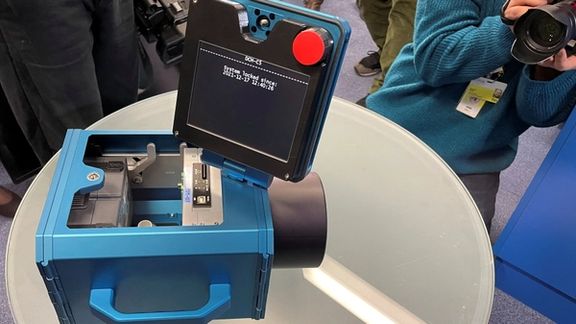In Latest Nuclear Twist, Iran Further Restricts UN Monitoring

With a resolution critical of Iran pending at the UN nuclear monitoring board, Tehran has announced new restrictions on access by international inspectors.

With a resolution critical of Iran pending at the UN nuclear monitoring board, Tehran has announced new restrictions on access by international inspectors.
The Atomic Energy Organization of Iran (AEOI) said Wednesday it would cut off several cameras and other monitoring equipment, leaving only that required under the Nuclear Non-Proliferation Treaty and removing ones installed as part of the Additional Protocol.
A statement from the AEOI argued that Iran’s acceptance of monitoring based on the Additional Protocol was ‘voluntary’ and designed to show goodwill towards the United Nations’ International Atomic Energy Agency (IAEA).
The IAEA board of governors, meeting this week in Vienna, is due to consider a resolution from the ‘E3’ (France, Germany, the United Kingdom) and the United States criticizing what agency director general Rafael Mariano Grossi told the board Monday was Iran’s failure to answer questions over unexplained uranium traces found by IAEA inspectors in Iran.
The AEOI statement implicitly linked its statement to developments at the IAEA.
“The Islamic Republic until now has maintained extensive cooperation with the International Atomic Energy Agency, but the agency unfortunately without considering that this cooperation was due to Iran’s goodwill, not only has not been appreciative, but even has interpreted it as Iran’s duty,” the AEOI said. “For this reason it was decided to disconnect Additional Protocol OLEM [on-line enrichment monitors] and ‘flow meter’ instruments, issuing the order to officials.”
Tensions in Vienna
Iran’s announcement said that monitoring cameras required under the NPT – constituting 80 percent of IAEA equipment in Iran – would continue to operate, but the timing of its move will raise tensions in Vienna, where China and Russia have criticized the US-E3 resolution for undermining efforts to revive the 2015 Iran nuclear deal, the JCPOA (Joint Comprehensive Plan of Action).
Iran in 2019, the year after President Donald Trump withdrew the US from the JCPOA, began to exceed the deal’s limits on its nuclear program, and has now accumulated enough, or nearly enough, highly-enriched uranium for a weapon, an aim Iran denies.
Tehran has also since 2021 reduced the access of IAEA inspectors, leading Grossi to argue the agency’s ability to monitor the nuclear program is seriously restricted. Grossi reached a temporary arrangement in February 2021, later extended, that Iran would keep data from certain cameras, including in plants manufacturing centrifuges used to enrich uranium, but this came under increasing strain as negotiators from the E3, China, Russia, Iran and the US struggled in Vienna to reach agreement over reviving the JCPOA.
An E3 statement issued Tuesday warned that with already restricted IAEA access“neither the Agency, nor the international community, know how many centrifuges Iran has in its inventory, how many were built, and where they may be located, precisely at the point it is expanding its programme [sic] and its component manufacturing and centrifuge assembling capabilities.”
The Europeans stressed that the IAEA had judged its verification work had been “seriously affected” and that even if the JCPOA were revived, the agency might not “be able to restore the continuity of knowledge…given the time that has now elapsed…”